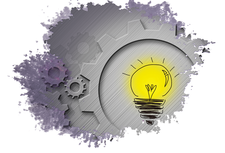This Linux from Mexico offers some convenient tools and a customized KDE environment
Nitrux

Nitrux Linux integrates a flexible new package tool, an easy-to-use encryption system, and other useful innovations.
Mexican-based Nitrux [1] is an Ubuntu-based Linux that features a modified KDE desktop, an innovative app store, an easy-to-configure firewall, and an easy-to-use encryption mechanism for personal data. Nitrux puts the emphasis on portable application formats and custom plasmoids for a pleasing and efficient desktop experience.
One unique feature of Nitrux is that it was actually created by professional user interface (UI) designers. Founder and project leader Uri Herrera, who has a background in graphic arts and UI design in addition to programming, envisioned the Nitrux project with special emphasis on its usability and aesthetics.
Download the approximately 1.5GB ISO image [2], which is designed for 64-bit systems, and transfer it to an optical data carrier or memory stick. When you boot the freshly created Nitrux medium, you will find a conventional GRUB boot manager that only supports live operation; the system does not provide for direct installation.
[...]
Buy this article as PDF
(incl. VAT)
Buy Linux Magazine
Subscribe to our Linux Newsletters
Find Linux and Open Source Jobs
Subscribe to our ADMIN Newsletters
Support Our Work
Linux Magazine content is made possible with support from readers like you. Please consider contributing when you’ve found an article to be beneficial.

News
-
Mozilla Plans to AI-ify Firefox
With a new CEO in control, Mozilla is doubling down on a strategy of trust, all the while leaning into AI.
-
Gnome Says No to AI-Generated Extensions
If you're a developer wanting to create a new Gnome extension, you'd best set aside that AI code generator, because the extension team will have none of that.
-
Parrot OS Switches to KDE Plasma Desktop
Yet another distro is making the move to the KDE Plasma desktop.
-
TUXEDO Announces Gemini 17
TUXEDO Computers has released the fourth generation of its Gemini laptop with plenty of updates.
-
Two New Distros Adopt Enlightenment
MX Moksha and AV Linux 25 join ranks with Bodhi Linux and embrace the Enlightenment desktop.
-
Solus Linux 4.8 Removes Python 2
Solus Linux 4.8 has been released with the latest Linux kernel, updated desktops, and a key removal.
-
Zorin OS 18 Hits over a Million Downloads
If you doubt Linux isn't gaining popularity, you only have to look at Zorin OS's download numbers.
-
TUXEDO Computers Scraps Snapdragon X1E-Based Laptop
Due to issues with a Snapdragon CPU, TUXEDO Computers has cancelled its plans to release a laptop based on this elite hardware.
-
Debian Unleashes Debian Libre Live
Debian Libre Live keeps your machine free of proprietary software.
-
Valve Announces Pending Release of Steam Machine
Shout it to the heavens: Steam Machine, powered by Linux, is set to arrive in 2026.

